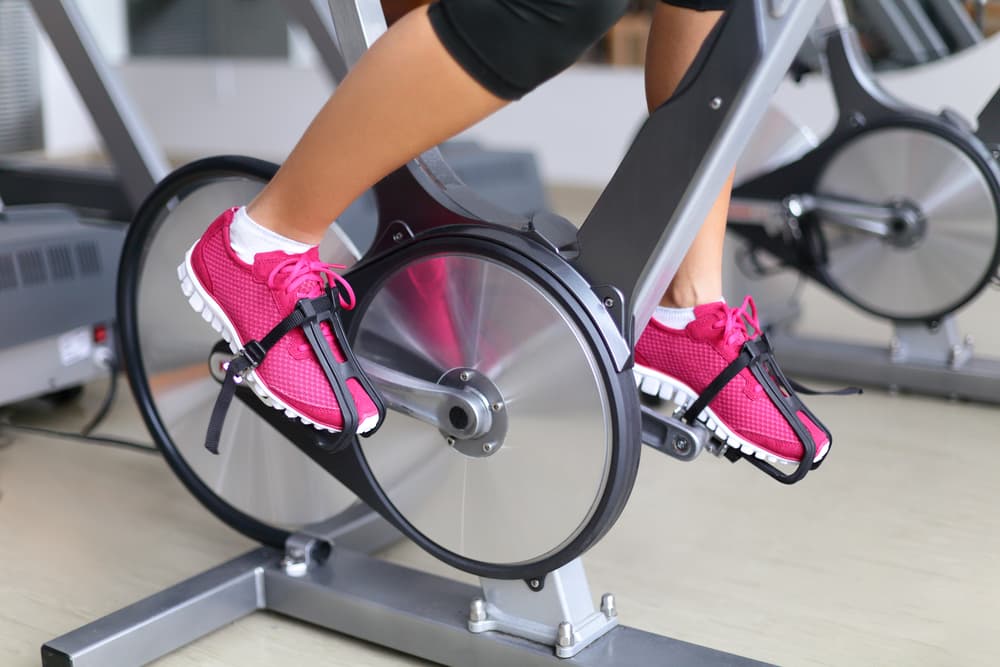Having an indoor stationary bike at home is an excellent investment for your fitness and health. But like any other machine, you need to do proper exercise bike maintenance to keep it in mint condition.
Now, if you’re unsure which part to clean, inspect and lubricate, then this guide is for you. To help you create a schedule, I’m dividing the steps into a daily, weekly and monthly checklist.
Maintenance Tools
Before we go into details of the actual maintenance, you need to prep your tools first. As you’ll be cleaning and checking your exercise bike regularly, I suggest creating your maintenance kit.
That way, you can grab the tool you need at any time, then put it back in one place after use. With a toolkit ready, it should be easy to make stationary bike maintenance a habit.
Some of the items you need on hand include a vacuum cleaner, screwdriver, spanner set, hex key set, pedal socket and socket set. Make sure to have a lubricant or light mineral oil, antibacterial wipes and a soft cleaning cloth as well.
Daily Exercise Bike Maintenance
Dust and grime can accumulate onto your indoor bike, whether you are using it often or not. So, ideally, give your machine a quick clean and inspection every day.
It shouldn’t take so much of your time. Besides, daily maintenance is an easy enough task that should keep your machine in tip-top shape.
Clean and wipe down your bike
Working out on an exercise bike is excellent for your cardio fitness. That also means you’ll be sweating a lot and transferring most of it onto your fitness machine.
The problem is, sweat can cause rusting. If you do not wipe it off, metal parts of your bike will be at risk of corrosion. It can lead to long-term problems and costly repair or replacement, too.
So, after your workout, add the following to your exercise bike maintenance list:
- Use antibacterial wipes or a damp cloth for wiping spots you touch, like the seat, frame and handlebars.
- Pay attention to areas prone to sweat droplets, including the handlebar and seat post, flywheel and chain guard.
- For stubborn stains, you can do spot cleaning with lukewarm water, mild detergent and lint-free cloth. Make sure not to use too much water, and wipe away excess moisture with a dry cloth right away.

Vacuum your home gym space
To avoid further dust build-up on your exercise bike, see to it that you do regular gym cleaning as well. A vacuum cleaner should prevent particles from spreading as you clean.
Also, if you have a mat underneath your bike, use rubber or anti-slip type rather than a carpeted one. Carpet fibres can spray dust onto your fitness machine, while a rubber mat is easier to clean.
Check and torque the pedals
Test the pedals for vibrations. If there’s unnecessary movement, use the pedal socket or wrench for tightening.
Doing this should prevent any pedal parts from becoming loose, which can potentially cause severe damages.
If you need to lubricate the pedal bearing, loosen the nut to remove the pedal. Then use a soft cloth to wipe the crank arm and pedal threads. Next, clean the pedal, and lubricate the pedal thread before putting the nut back on.
Weekly Exercise Bike Maintenance
Every week, see to it that you check all the movable parts of your stationary bike. These can loosen over time and might cause damage or accidents.
Make sure to use the proper tightening tools for the job as well. Here are the areas you need to inspect:
- Pin frame fittings. Pull out the pin to clean and lubricate the shaft. When done, make sure the fittings are secure. If not, use a wrench to tighten them.
- Seat hardware. Check if the seat is stable and level. Tighten any loose part if you find any.
- Brake pad. An air or magnetic bike does not have this part. But if you do have it, it can either be felt or leather. When defective, a brake pad can be squeaky or difficult to dial for correct resistance. You can solve either issue with a spray lubricant. To do this, spin the flywheel, then spray some lubricant onto it. Finally, pulse the brake to make the pad absorb the oil.
- Bottom bracket. Inspect this part together with the pedals, toe clips and straps. Reattach and tighten loose parts.

Monthly Exercise Bike Maintenance
The purpose of your monthly maintenance is to check the entire bike frame and its assembly components. Tasks will centre on cleaning and relubricating moving hardware.
As it is more comprehensive than your daily and weekly maintenance, your bike check-up every month should take longer. Your to-do list should include:
- cleaning and lubrication of the seat, pop-pins, handlebar post and chain drive if any
- putting the bike upside-down to inspect and remove rust with a stiff-bristled brush
- tightening of the crank arm, bolts, brackets and chain
- inspection of the seat and pedals for tears or rips
- checking of the brake pads for grinding noise
- testing of the speed sensor
Final Thoughts
Exercise bikes, no matter the type or brand, cost money. So, it’s only natural that we want it to last to make the most of our investment and its many benefits.
And the best way to do that is to have a regular exercise bike maintenance schedule. Make it second nature to wipe your fitness equipment clean after use. Then habitually check its parts for occasional tightening or lubrication.
Keep these in mind, and you’ll be biking to good health for years to come!
- Elliptical Cross Trainer vs Exercise Bike: Which is Better? - 24 June 2025
- How Do the Different Massage Gun Attachments Work? - 23 June 2025
- What are the Benefits of an Elliptical Trainer? - 20 June 2025
